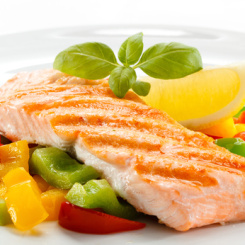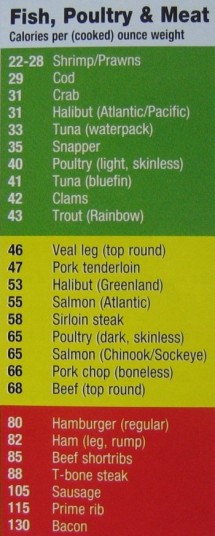 Knowing something about appetite regulation will support your efforts at eating fewer calories over the course of the day, which translates directly into better success with weight loss or maintenance.
Knowing something about appetite regulation will support your efforts at eating fewer calories over the course of the day, which translates directly into better success with weight loss or maintenance.
As I discussed in my recent blog 5 Things you Need to Know about Protein for Healthy Weight Loss protein "stays with you longer" than "carbs" or fat. This characteristic of protein supports your efforts at eating fewer calories over the course of the day. That however is not the end of the story.
We also need to also look at which types of protein are most and least satiating. The first example is liquid proteins, which are a complete exception to the rule. Liquid proteins are NOT more satiating than the other macronutrients (carbohydrates and fat).
Liquids in general have little effect on subsequent appetite and therefore are generally correlated with higher overall calorie intakes. This is why you're better off getting in the habit of drinking lots of calorie-free beverages (start with water), while staying away from liquid calories as much as possible.
The next defining characteristic between proteins is how lean they are. The leaner the protein the more satiating it will be.
This is great news since the healthiest protein choices are also the leanest protein choices. It's also logical, since fat is nearly* the least satiating macronutrient, and the more fat a protein has the less satiating it is.
 An ounce of cooked protein (see chart**) runs from around 25-calories (shellfish, which is basically pure protein) to about 90-calories (T-bone steak). The lower the calories of the protein type, the leaner the protein is. Bacon and sausage are both considered “fats” (not proteins) since they’re about 78% fat calories.
An ounce of cooked protein (see chart**) runs from around 25-calories (shellfish, which is basically pure protein) to about 90-calories (T-bone steak). The lower the calories of the protein type, the leaner the protein is. Bacon and sausage are both considered “fats” (not proteins) since they’re about 78% fat calories.
There’s a lot more to cover (which I will address in a future blog) regarding appetite regulation that can assist you in making choices that support your weight loss or maintenance efforts. For instance, how do the following factors effect satiety? Energy density, fiber, glycemic index or load, variety, portion size, etc., etc.
Satiety: The sensation fo fullness, and lack of hunger, between one meal and the next.
Satiation: The sensation of fullness that devlops during the progress of a meal, and which contributes to meal termination.
If you don’t want to miss a blog you can subscribe to my RSS feed or sign up to get my blog by email.
All the best,
-Dorene
*Alcohol is technically the least satiating macronutrient, which completely bypasses hunger controls!
**this chart is from the Food & Calories section of my book, The NEW Healthy Eating & Weight Management Guide.
1. Stubbs RJ, et al. Carbohydrates and Energy Balance. Annals NY Acad Sci 1997;819:44-69.
2. Stubbs RJ, et al. Energy Density of Foods: Effects on Energy Intake. Crit Rev Food Sci Nutr 2000;40(6):481-515.